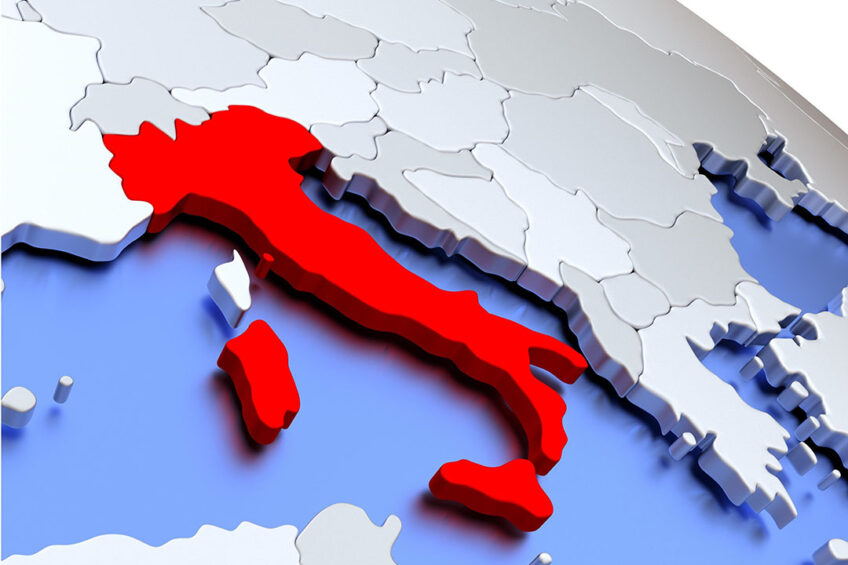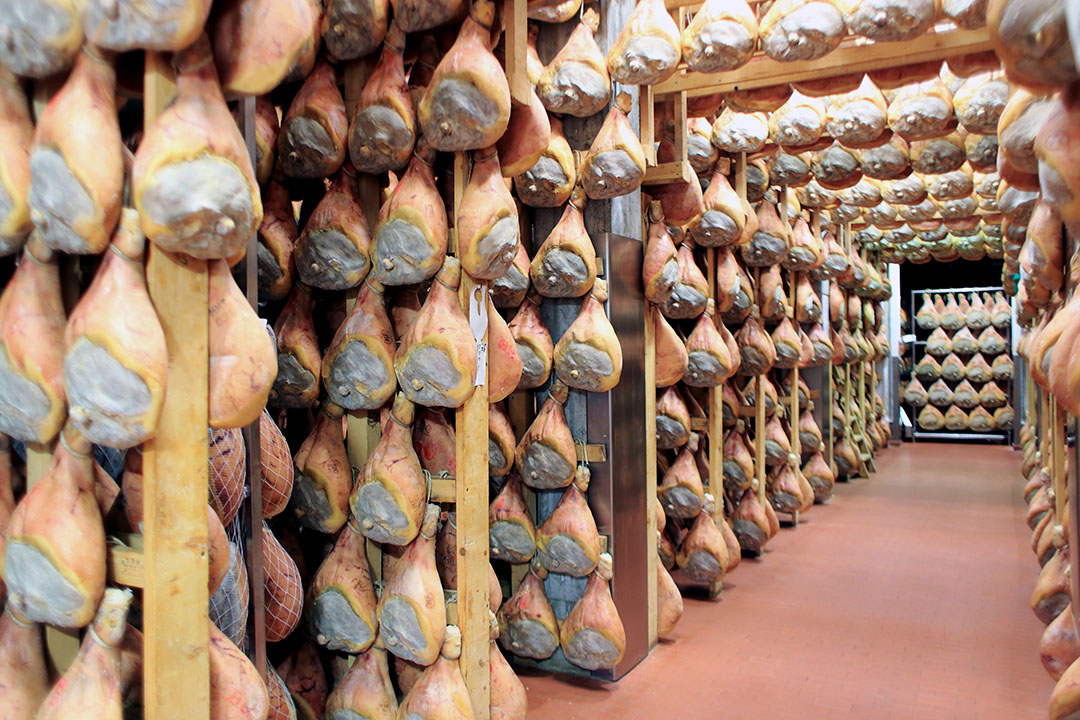Italy: Famous for hams, dependent on pig imports

Prosciutto di Parma, perhaps better known under its English name Parma ham, is most likely the best known pork product from Italy. The industry in the country is atypical, having a strong focus on heavy pigs. It has a unique character and tradition, yet also depends on pig and pork imports. How does that all come together?
Italy has only 8.7 million pigs, of which fewer than 700,000 are sows. There are about 4,000 pig farmers in Italy; the average farm contains between 700 and 1,200 sows or between 2,000 and 8,000 finishing pigs. The percentage of closed companies is considerably lower than of non-closed companies. The vast majority of pigs in Italy are kept for Parma ham, mainly in the north of the country. About 4.4 million are held in the Lombardy region and 1.1 million in the Emilia-Romagna region. Most pigs therefore are also slaughtered in these regions. A total of 40 million hams are produced each year. The ham corresponds to 35% of the pig.
Self-sufficiency rate is 62%
In concrete terms, this means that the self-sufficiency rate is only 62%. Only 1.3 million tonnes of meat is produced from the local supply, and at least 1.1 million tonnes of pork meat must be imported. That import is mainly processed into raw ham products. A small amount of meat, 296,000 kg, is exported. This gives a consumption level of 38 kg of pork per person per year.
More integrations
About 50% of pig farms work through integrations. A shift is occurring, with the number of integrations increasing. As a result, the number of farms is not decreasing and the number of pigs is remaining stable. After all, slaughterhouses must continue to operate.

Pigs for Parma hams
The general public is most probably familiar with images of black Italian outdoor pigs, such as the Nero di Parma breed. That breed, however, constitutes only a very small percentage of Italy’s pigs. It is less suitable for Parma ham due to the fat content and the rations the pigs receive. Usually, white sow and boar breeds (Large White, Duroc, a white Duroc variety or commercial hybrids) are used for Parma ham, which must meet strict selection requirements.
An important selection requirement for Parma ham production is the bacon content, as the hams must contain 2.5 cm of bacon. Finishing pigs are slaughtered at nine months of age with a live weight of 170–180 kg. For a good Parma ham, the pigs shouldn’t grow too fast, because then too many unsaturated fatty acids will be present.
Nutrition and traceability
Nutrition therefore plays an important role. The pigs receive a minimum of 60% grain, and feeding whey contributes to a high-quality ham. For a real Parma ham, this whey must come from the production of Parmesan cheese, known in Italy as Parmigiano Reggiano, which imparts flavour to the fat.
Traceability is also an important issue with Parma ham production. The raw ham receives a stamp, but traceability is also addressed at the farm, using a tattoo number in the ear and also on the pig’s thigh. There are three codes in that tattoo: province, breeder and month of birth of the pig.
Animal welfare: A hot item
In Italy, new legislation was introduced with regard to free range farrowing pens. From 2027, these must be 6.5 m2. The country is also working to stop tail docking. The aim is in total to not dock 4% of tails. If this does not go well, action can be taken with the aid of a step-by-step plan. However, there is no end date yet, as in practice, it is not easy to keep long tails. Pigs need to be kept busy and farmers must have good control. So stopping tail docking requires a lot more work and more distraction material.
Pork meat production
The Italians have regulated their meat production well with the help of the European Union. EU regulation 1151/2012 deals with quality schemes for agricultural products and foodstuffs. This consists of two concepts.
Protected Designations of Origin (PDO)
This abbreviation is known as DOP in Italian. With PDO, the product must come from a certain place and from a certain region or, in exceptional cases, a certain country. The quality or characteristics are mainly or exclusively due to the specific geographical environment with its own natural and human factors, and all production stages must take place in the defined geographical area. Parma hams are a good example.
Protected Geographical Indication (PGI)
Known as IGP in Italian, these requirements are slightly less strict: The product must come from a specific place or region or country. The quality, reputation or other characteristic must be mainly due to the geographical origin, and at least one production stage must take place in the defined geographical area. This therefore offers the possibility to import hams, process them in the designated region in Italy and then sell them as Italian raw ham, but not as Parma ham. An example of a PGI product is Mortadella Bologna.
These two quality marks guarantee quality products – and Italy is famous for it. Of the 40 million raw hams produced, 11 million have the DOP quality mark. Parma hams are 8.1 million of this, and 2.5 million of these are exported. So about 20% of the country’s production is real Parma ham. That corresponds to 3,500 pig farms producing under DOP legislation.
Ammonia legislation
To reduce air pollution, there are also rules regarding ammonia emissions. For example, options are currently being examined to cover manure storage pits and thus reduce ammonia. Since 2023 it has been forbidden in Italy to build new open manure silos. And since this year, the manure must be applied in the fields within 12 hours. This is strictly monitored by the government. As the pig houses are usually ventilated naturally, there are no low-emission housing systems.
Disease situation
Italy is the only country in Europe to have both genotypes of African Swine Fever (ASF), although they do not co-exist in the same areas of the country. Since the 1960s, genotype I has been around on the island of Sardinia in the Mediterranean, an endemic situation that has been known for many years, leading to strict measures determining what can be shipped off the island. Then in January 2022, as with many other countries in middle and eastern Europe, Italy’s wild boar population fell victim to genotype II. It started out with infection in the north, around Genoa, followed by Rome. The virus is also currently found in two populations in the south of the country. The recent outbreaks make it extra difficult to sell produce outside the EU as major markets such as China, Japan and Taiwan closed their borders to Italian imports of pork products.
Future
As in many other European countries, Italy is seeing a shift in consumption patterns. Future consumers will choose less meat due to sustainability considerations, so demand is expected to fall. In addition, convenience is becoming more important, meaning that demand for pre-cooked products such as filet roulade, pulled pork or spare ribs will rise. This trend has just started to increase.
Yet that doesn’t mean the end of the pork industry. Because of Italy’s quality marks and the country’s pride in good products, Italian consumers as well as those abroad needn’t worry about the availability of a decent piece of Italian raw ham in the future.











